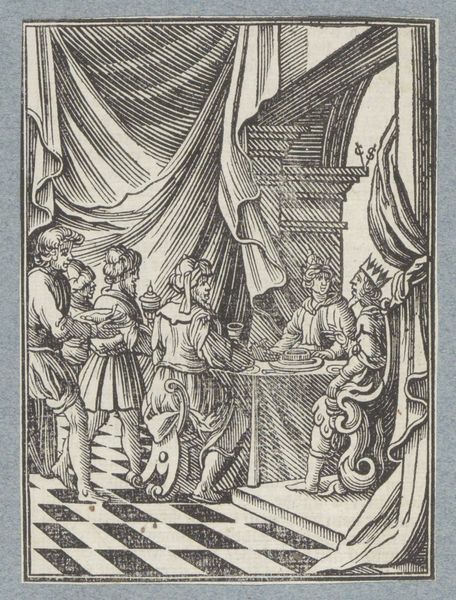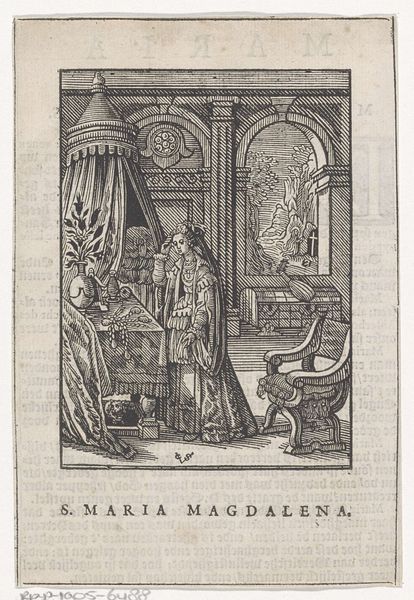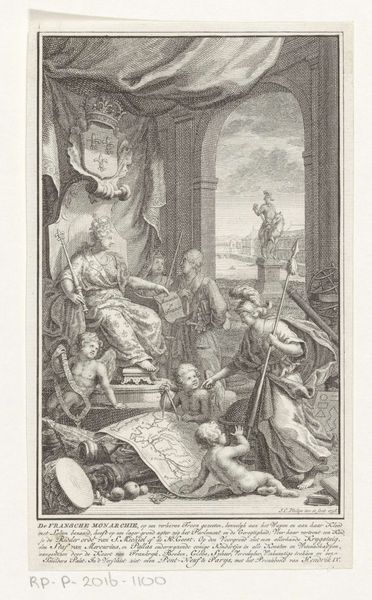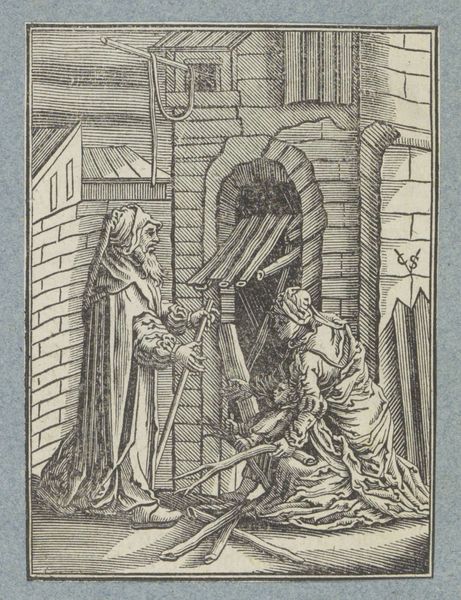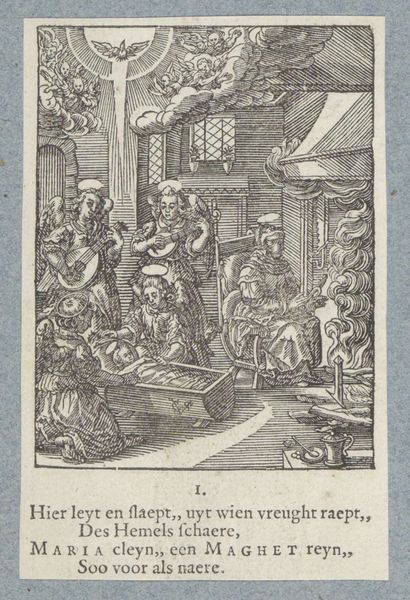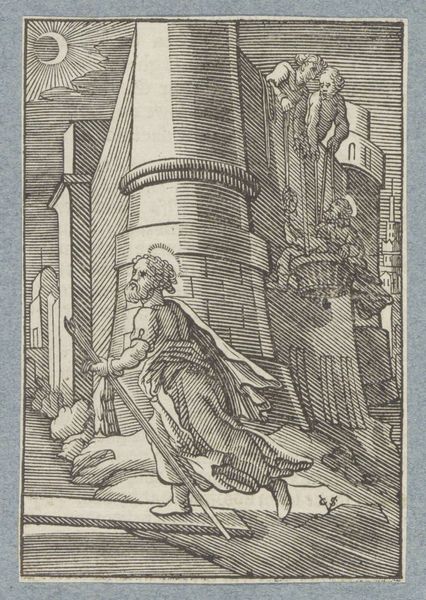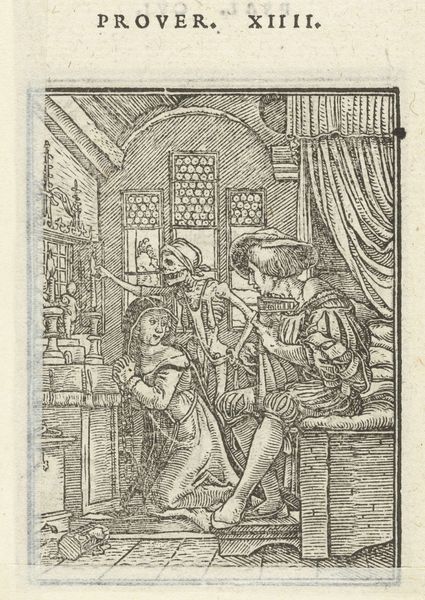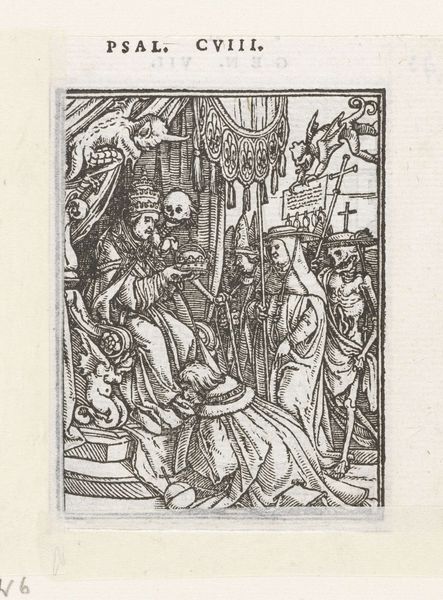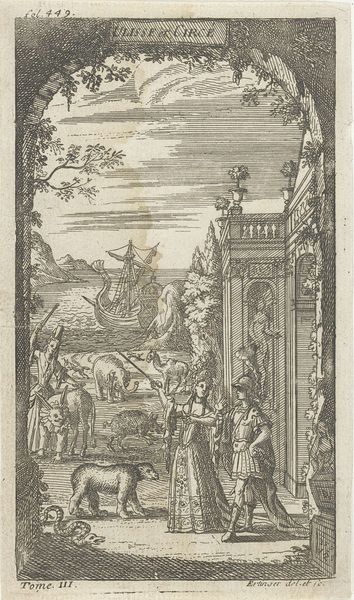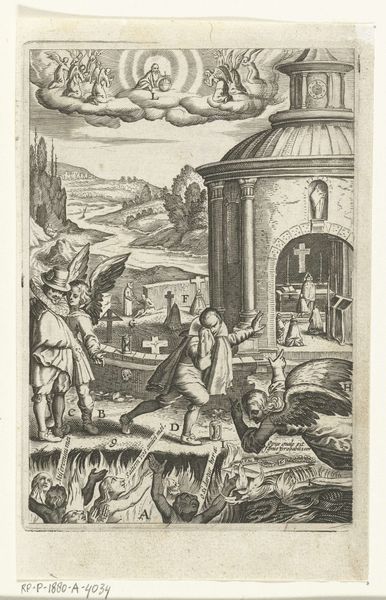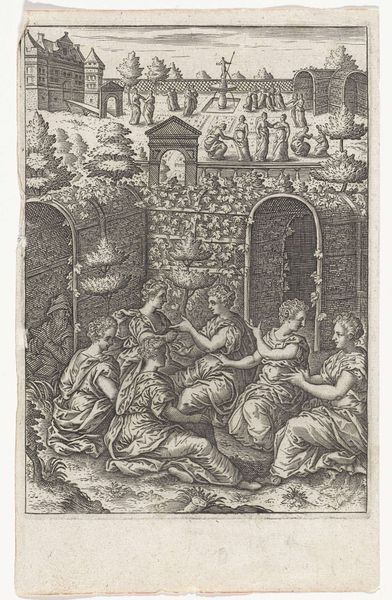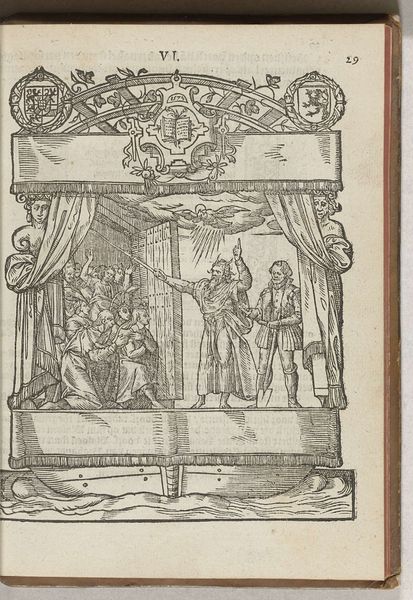
Duyfken wekt en maant Willemynken om met haar op pelgrimage te gaan 1590 - 1638
0:00
0:00
boetiusadamszbolswert
Rijksmuseum
print, etching, engraving
#
narrative-art
# print
#
etching
#
figuration
#
line
#
history-painting
#
northern-renaissance
#
engraving
Dimensions: height 113 mm, width 66 mm
Copyright: Rijks Museum: Open Domain
Curator: This etching by Boëtius Adamsz. Bolswert, made between 1590 and 1638, is titled "Duyfken wekt en maant Willemynken om met haar op pelgrimage te gaan". It resides here in the Rijksmuseum. Editor: It evokes a certain stillness, despite the narrative implications. The precise linework captures textures and contrasting tonal values to craft a deeply layered scene. The visual weight seems anchored by the bed's canopy. Curator: Indeed. Bolswert's mastery of line—notice how each is carefully placed, from the tapestry to the figures' robes. Let's consider the historical backdrop. This image depicts a specific biblical moment; Bolswert was interested in using everyday stories as a framework for political arguments of that era. Editor: I agree, there’s certainly symbolic intention in rendering it so plainly, even domestically. How fascinating that the pilgrimage theme intertwines both faith and the agency of these women in their societal context. But also, what's conveyed about the power structures governing female agency, faith, and freedom in that epoch? Curator: Note how Bolswert’s use of composition adds depth to this question. We observe one figure roused from their bed chamber while in the background others embark on their holy path toward a blinding light—the very manifestation of enlightenment, if you will. There’s visual symmetry with that canopy. Editor: What's striking to me is not just its composition, but also how such visual elements challenge our perceptions surrounding feminine strength and resolve; it invites analysis that exposes cultural and gendered limitations. Is their strength self-governed? Where lies their conviction? How are these themes visualized by the artist to open that debate? Curator: The very open-ended questions these engravings pose allows them to continue to generate discussion for years to come. Editor: Definitely; that is why Bolswert’s artistry grants viewers from completely different eras—our own—avenues to discover relevance as we grapple to discern personal meanings across the spectrum connecting our historical selves with contemporary selves!
Comments
No comments
Be the first to comment and join the conversation on the ultimate creative platform.
